Diagnostic devices
Corneal topographers
OCULUS Pentacam HR and CSO corneal topographers take images of the corneal surface and are the most important examination when selecting candidates for laser vision correction. The apparatuses take images of the front and back surface of the cornea. They show in digital form the actual corneal surface, as well as the mathematical models that indicate the existence / non-existence of deviations from a perfectly healthy eye. In addition to imaging the corneal surface, both topographers automatically map the higher order aberrations of the cornea and present and analyze the image of the entire anterior ocular segment (anterior chamber, pupil, iris, lens thickness).
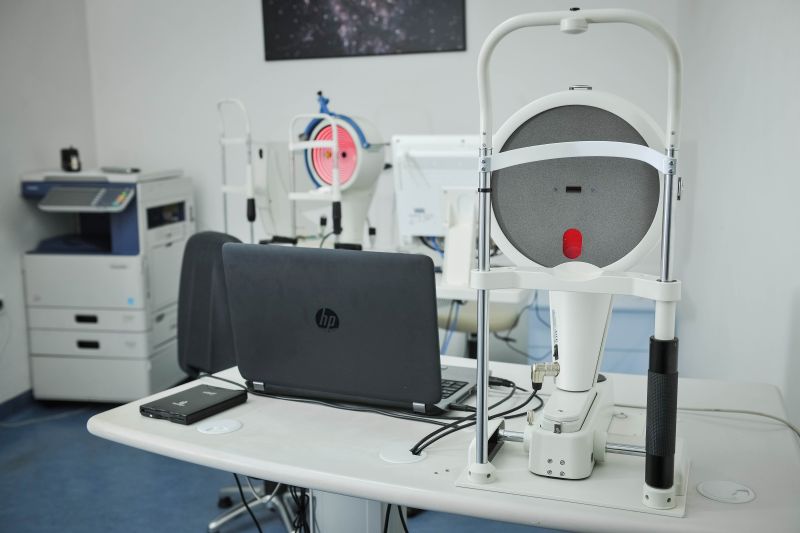
Pentacam HR is considered the gold standard (reference device) in the topography of the cornea and it can make 100 images of the cornea in a second, with 138 000 processed points in only 2 seconds.
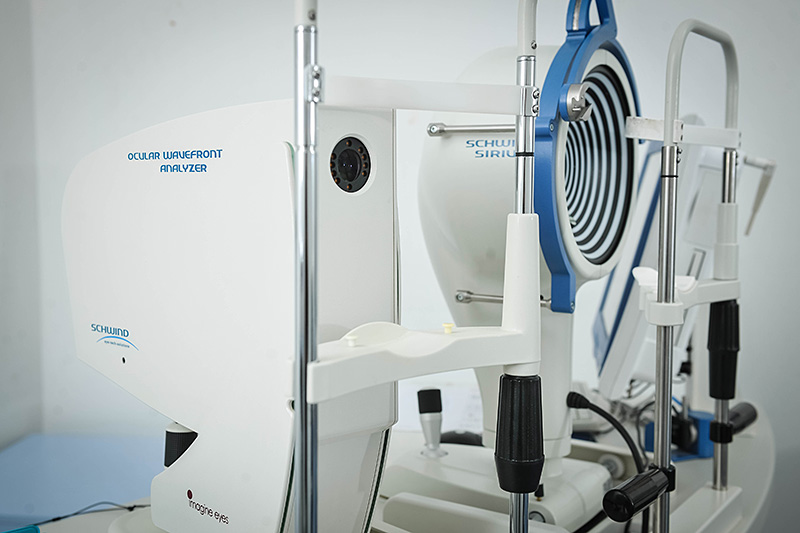
CSO Sirius is directly linked to the excimer laser and allows the use of personalized treatments.
Aberrometers
Luneau Visionix Aberrometer and CSO IRX aberrometer map lower order(the diopter) and higher order aberrations of the entire eye. The data on the aberrations is obtained from the analysis of over 1500 points. Objective data on the diopter completely eliminate the possibility of erroneous correction and reduce the need for the patient to decide on the best image quality (the exact diopter). Laser correction of higher order aberrations primarily improves the quality of night vision (light scattering is reduced). CSO IRX aberrometer is directly linked to the excimer laser and allows the use of personalized treatments.
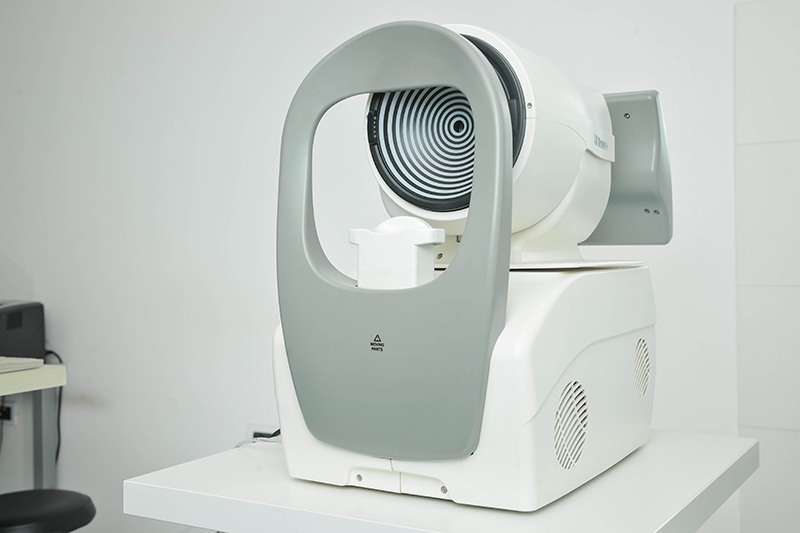
Pupilometer
CSO pupilometer measures the size of the pupil in all lighting conditions by changing the lighting conditions during imaging. The data on the maximum diameter of the pupil (the pupil at night) is essential for the planning of laser surgery. Excimer laser ablation zone (part of the cornea where diopter is corrected) has to be wider than the widest pupil in order to prevent night vision disturbances.(halo, glare)
Method of examination
The patient sits on the device, lays his head and the device automatically captures the cornea with the corneal topographer, or aberrometric profile of the eye with the aberrometer. The examination is painless, the imaging takes a few seconds. The test is not harmful, and the finding is immediately obtained in a digital form or printed on the printer.
Laser technology
Schwind Amaris 750Hz
(Schwind High Tech Solutions, Germany) - Excimer laser for vision correction. The laser is currently considered the most advanced on the market - it has the highest speed of operation (750 Hz) compared to the competition.
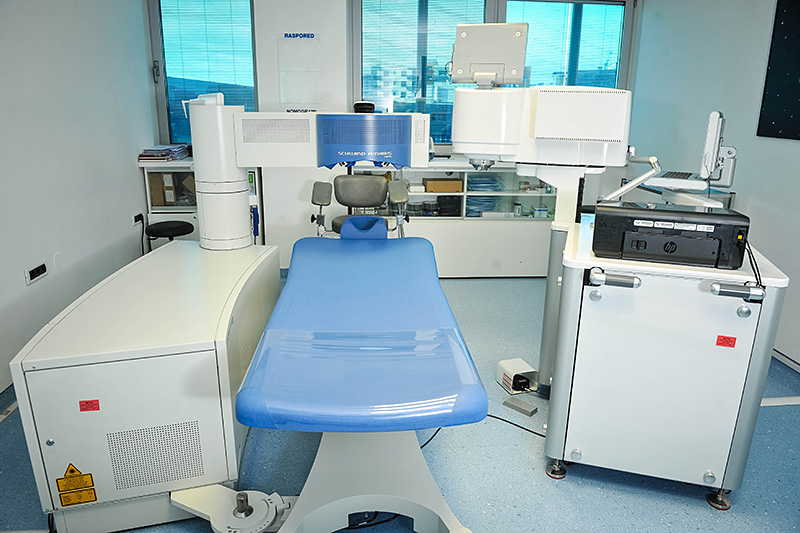
The speed of vision correction depends on the speed of the laser (Schwind requires less than 2 seconds for 1 diopter) and the laser also has the smallest beam which forms the surface of the cornea (the beam size of 0.65 mm, compared to the competition Alcon WaveLight 0.95mm and AMO Visx 2-6.5mm). Excimer laser speed needed for diopter correction is essential for the precision of the correction, and the size of the beam is essential for the quality and smoothness of corneal surface and vision quality. This laser, due to the high speed of diopter correction has extremely precise results (over 98% accuracy), and the small size of the beam diameter results in the smoothest surface which is most similar, or even better in some patients, than a virgin cornea.
In addition to superior technical features, the specialty of Schwind Amaris is also its 6D tracker for tracking the position and movement of the eye during surgery: eye tracking system, addition to tracking horizontal and vertical eye movements, also tracks the rotation of the eye as well as static and dynamic cyclotorsion. Static cyclotorsion takes into account the fact that the surface curvature of the eye does not look the same when the patient is sitting (when capturing the eye, i.e., on the image that is transferred in the laser as the vision correction plan) and while the patient is lying down, when performing surgery. Eye monitoring system (tracker) is also the fastest compared to the competition, which means that it responds to the patient's eye movement during surgery in milliseconds, thus preventing unwanted results.
Wavelight Allegretto 400Hz
(Alcon Laboratories, USA) - Allegretto is the second fastest laser in the market that operates at a speed of 400 Hz and takes about 2 seconds to remove one diopter. Equipped with twice as fast eye monitoring system so that it delivers a safe and accurate result in the case of moving of the patient's eye. Allegretto is the most commonly used laser in Europe with excellent and stable results.
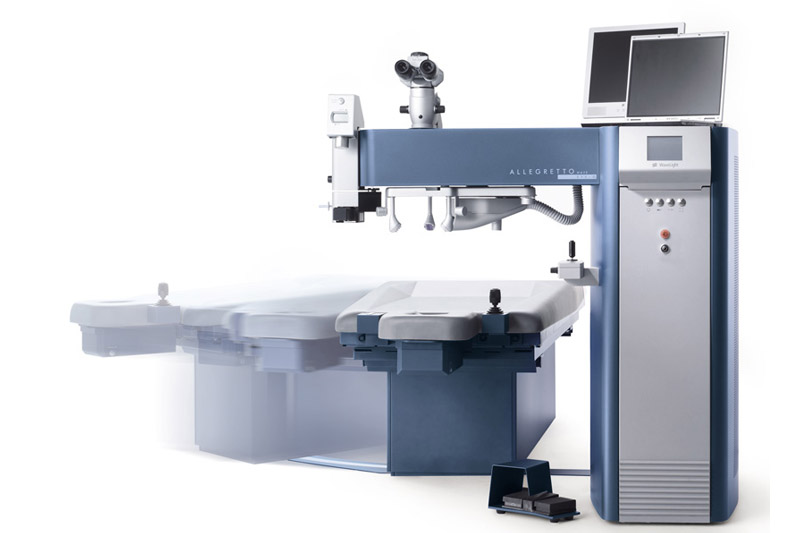
AMO Intralase 150Hz
(Abbott Medical Optics, USA) is a femtosecond laser for flap creation. It is currently the most commonly used femtosecond laser on the market with very positive experiences by users in the last 10 years (it operated on over several million eyes at the global level, while all other lasers have operated merely on thousands).
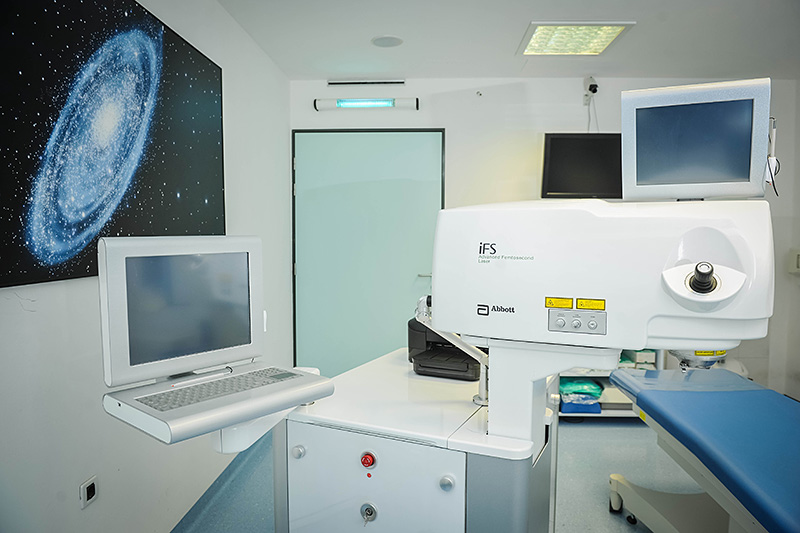
The laser is characterized by extremely low level of complications that leave no consequence to the eye and vision and are correctable in the same surgical procedure. The laser offers the possibility of adjusting the shape and size of the flap to each individual diopter and the eye and the possibility of changing the angle of entry which increases postoperative corneal strength. It almost completely prevents subsequent flap movements in cases of serious eye damage.

 Pentacam HR is considered the gold standard (reference device) in the topography of the cornea and it can make 100 images of the cornea in a second, with 138 000 processed points in only 2 seconds.
Pentacam HR is considered the gold standard (reference device) in the topography of the cornea and it can make 100 images of the cornea in a second, with 138 000 processed points in only 2 seconds. CSO Sirius is directly linked to the excimer laser and allows the use of personalized treatments.
CSO Sirius is directly linked to the excimer laser and allows the use of personalized treatments.

 The speed of vision correction depends on the speed of the laser (Schwind requires less than 2 seconds for 1 diopter) and the laser also has the smallest beam which forms the surface of the cornea (the beam size of 0.65 mm, compared to the competition Alcon WaveLight 0.95mm and AMO Visx 2-6.5mm). Excimer laser speed needed for diopter correction is essential for the precision of the correction, and the size of the beam is essential for the quality and smoothness of corneal surface and vision quality. This laser, due to the high speed of diopter correction has extremely precise results (over 98% accuracy), and the small size of the beam diameter results in the smoothest surface which is most similar, or even better in some patients, than a virgin cornea.
The speed of vision correction depends on the speed of the laser (Schwind requires less than 2 seconds for 1 diopter) and the laser also has the smallest beam which forms the surface of the cornea (the beam size of 0.65 mm, compared to the competition Alcon WaveLight 0.95mm and AMO Visx 2-6.5mm). Excimer laser speed needed for diopter correction is essential for the precision of the correction, and the size of the beam is essential for the quality and smoothness of corneal surface and vision quality. This laser, due to the high speed of diopter correction has extremely precise results (over 98% accuracy), and the small size of the beam diameter results in the smoothest surface which is most similar, or even better in some patients, than a virgin cornea.
 The laser is characterized by extremely low level of complications that leave no consequence to the eye and vision and are correctable in the same surgical procedure. The laser offers the possibility of adjusting the shape and size of the flap to each individual diopter and the eye and the possibility of changing the angle of entry which increases postoperative corneal strength. It almost completely prevents subsequent flap movements in cases of serious eye damage.
The laser is characterized by extremely low level of complications that leave no consequence to the eye and vision and are correctable in the same surgical procedure. The laser offers the possibility of adjusting the shape and size of the flap to each individual diopter and the eye and the possibility of changing the angle of entry which increases postoperative corneal strength. It almost completely prevents subsequent flap movements in cases of serious eye damage.